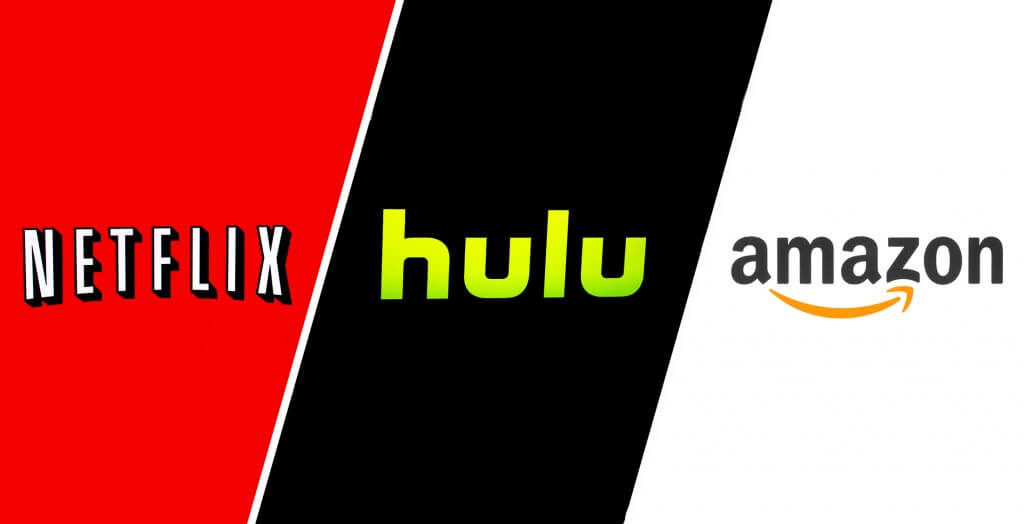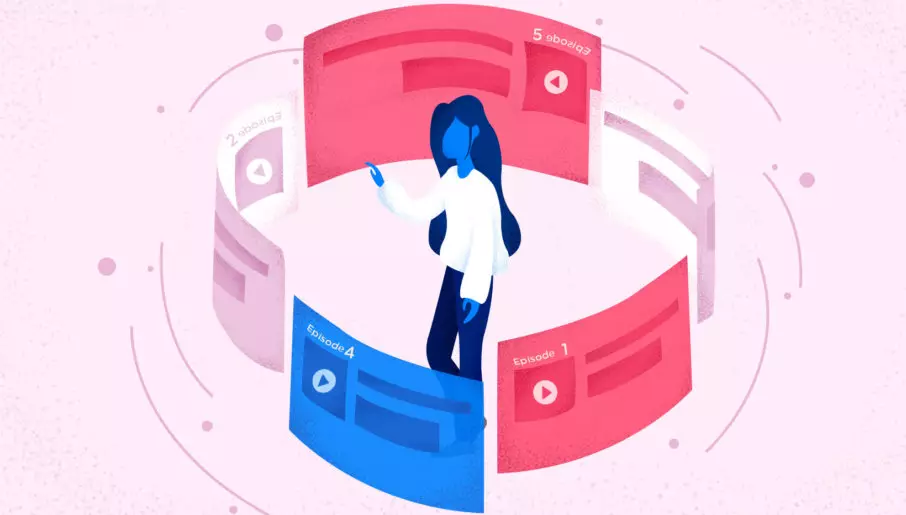If you’re not a part of the media landscape, there’s a good chance you haven’t heard of IPTV. But you’ve probably been using it for years.
And it’s likely that you’re going to be using it more in the future. IPTV is growing quickly, with new providers and services popping up alongside traditional TV providers with more IPTV offerings.
But what is IPTV? What does IPTV stand for? How does it work? And how can you use it to improve your TV-watching experience?
We have the answers.
What Is IPTV?
Let’s start with the basics. What, exactly, is IPTV?
IPTV stands for “internet protocol television.” The “IP” in IPTV is the same as the one in your IP address or VoIP (voice over IP). All that means is television programming is being communicated using the internet protocol.
To understand what that means, you need to know a bit about how non-IPTV works. With cable or satellite TV, broadcasters send out signals in real-time, and viewers receive them—you’re only able to watch what’s being live broadcasted. Unless you have some sort of recording device, you don’t get to dictate what’s on when. You just tune in when you can and watch what’s available.
IPTV is different. Instead of transmitting content via light pulses in fiber-optic cable or radio waves from a satellite, IPTV sends shows and movies through your standard internet connection. (You may be using a cable or satellite internet connection from your preferred internet service provider (ISP), but these are independent of the ones that usually carry your TV signals.)
And the difference doesn’t stop there. IP network offers far more flexibility within the network enabling two-way interactivity, compared to the traditional, one-way cable connectivity or satellite broadcast network. This allows end-users to have more controls and options to interact, and personalize their experience.
Instead of broadcasting a range of shows on a specific schedule, most IPTV uses video on demand (VOD) or time-shifted media—we’ll discuss these, and a third format, in just a moment.
There’s some complicated network architecture behind all of this making it work, including lots of transcoding from traditional signals to IP-friendly ones. But the important thing is that you don’t have to watch what’s being broadcast. You can tell your provider what you want to watch, and they’ll send it to you immediately.
If you’ve used a streaming service like Netflix or Hulu, it’s the same idea, but with TV instead of movies or syndicated shows.
Do You Need a Set-Top Box for IPTV?
Because most older TVs aren’t equipped for IPTV, you may need a set-top box like Apple TV, Roku, and Amazon Fire TV that “translates” what you receive over your internet connection into a format that your TV can read.
Your computer, on the other hand, doesn’t need anything to watch IPTV. Once you sign up for a service, you can use it to live stream whatever you want in any of the IPTV formats (which we’ll discuss next).
So if you can mirror your screen to your TV, you can watch IPTV without a set-top box.
New Smart TVs also can come with built-in IP support that can be connected to your network and set up to use IPTV services.
Hybrid IPTV
Many TV providers are now adopting a hybrid approach to IPTV to solve some of the issues with fully IP-enabled broadcasts. IPTV requires a great deal of bandwidth to transmit a ton of data at high speed.
Hybrid IPTV combines traditional TV services with IP-based ones. The biggest selling point is that it’s all delivered through a single box. This lets TV providers expand their offerings to their subscribers.
It also makes it easier to roll out new products and services without completely overhauling the set-top box. It’s a good way to transition from a traditional model to a more modern one.
How Does IPTV Work?
There are three different IPTV formats. We’ll take a look at each one individually.
Video on Demand (VOD)
VOD streaming is exactly what it sounds like; you get video whenever you demand it. Movie-streaming sites are VOD services. There’s no time limit on what you can watch (other than what the service currently has the rights for).
You tell the service what you want to watch, they send it to you via the internet, and you watch it. Simple.
Netflix, Hulu, and Amazon Prime Video are popular examples of Over-The-Top (OTT) video streaming services. (There are many smaller, niche services available, as well.)

Time-shifted media
If you’ve watched “catch-up TV,” you’re familiar with this type of IPTV. Many broadcast networks now allow users to watch shows that they missed when they have the time to do it.
The important difference between time-shifted media and VOD is that the content being shared has a limited shelf life. You can’t go back and watch an episode of a show that you missed several years ago (well, you could, but it would be VOD then).
One of the most popular services that offers time-shifted media is BBC’s iPlayer.
(If you think that VOD and time-shifted media sound very similar, you’re right. It mostly has to do with how long you’re able to watch a show after it airs.)
Live IPTV
Like broadcast TV, you can also watch shows live on IPTV. Many people watch sporting events this way; it’s easy to stream a game on your phone while you’re on the go.
Other than being broadcast over the internet instead of through traditional cable TV media, live IPTV is pretty much the same as regular TV.
FOX Sports Go, CBS Sports HQ, Hulu Live TV, and Sling TV all offer live IPTV.
IPTV Services
While IPTV is definitely getting bigger, it’s still a pretty niche market. Services like Netflix and Hulu offer a lot of TV shows (when they can get the rights to them), and video on demand is growing quickly.
It’s the other formats of IPTV, where there’s a significant potential for changing how people watch TV, that have yet to take off.
Catch-up TV is becoming more popular. Downloading apps for providers like FOX, CBS, and NBC let viewers see the shows that they missed without the effort it takes to set up and record something via a set-top box like a TiVo.
NOW TV, TVPlayer, and Epicstream are all making headway into the live IPTV market, but they’re still not as mainstream as more popular VOD services.
Sports seems to be the area of TV that’s most quickly embraced IPTV. There are plenty of subscription sports packages that you can watch from your computer or stream to your TV whenever you want.
But it’s a safe bet that the rest of the live television world will be right behind.
Many services are popping up that allow users to create their own VOD and live-streaming services, too. That way people can share their skills, advice, and passions with anyone else in the world
Starting Your Own IPTV Service – IPTV Providers
If you’re interested in starting your own IPTV service, your best bet is to hook up with one of these service providers. They have the bandwidth, server capacity, and distribution channels that you need.
All you need to do is sign up, choose a plan, and start uploading your content. What sort of content? Who will watch it? How will you make money? All of those things are up to you.
There are IPTV channels for learning magic tricks, getting fit, learning to dance, watching movies, and pretty much anything else you can think of. If you have something you want to share with the world, you can use IPTV to do it.
Of course, you’ll still need to record all of that content. Which takes a lot of work. But once you’ve done that, these services will let you promote and distribute your TV shows, online video content, or movies with ease.
It’s like building your own version of Netflix just for you and your subscribers.
The Future of IPTV
It’s difficult to tell how many people are using IPTV services at the moment. With the wide variety of providers, different formats, and a huge amount of pirated content available, there are a lot of things to keep track of.
But there’s no doubt that IPTV will be increasing in popularity. Grand View Research estimates that the market will be worth over $117 billion by 2025. The increase in user demand as well as improvements in networks will support this growth.
Grand View also predicts that subscription-based IPTV will grow quickly over the next decade, suggesting that services like TVPlayer and Hulu Live TV will gain in popularity.
Some of that growth has started already.
Major media providers are planning to offer new streaming services to compete with Netflix, Amazon Prime, and other streaming heavyweights. And more traditional TV providers are allowing for time-shifted media via their apps. Even cable providers are allowing their subscribers to watch from their phones.
And now that people can create their own channels to distribute their content with ease, the amount and variety of IPTV options will be increasing quickly. Viewers won’t be limited to what broadcasters are sharing anymore; they’ll be able to go to each other to see everything from fitness videos to audience-specific movies.
In short, the future of TV is IPTV.

